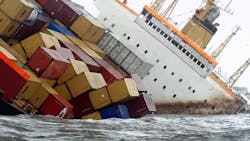Many Executives Fail at Supply Chain Risk Assessment
Many supply chain executives have done very little to formally manage their supply chain risk, according to “Managing Risk in the Global Supply Chain,” a report by the Supply Chain Management Faculty at the University of Tennessee in conjunction with UPS Capital. Their research team distributed a questionnaire across a wide range of companies, including retailers, manufacturers, and service providers. Based on the responses of more than 150 different supply chain executives, it was found that:
- None of those surveyed use outside expertise in assessing risk for their supply chains;
- 90 percent of firms do not quantify risk when outsourcing production;
- 66 percent had risk managers in their firms, either in legal or compliance, but virtually all of those internal functions ignored supply chain risk;
- 100 percent of supply chain executives acknowledged insurance as a highly effective risk mitigation tool, but it was not on their radar screen nor in their purview.
What this report’s author, J. Paul Dittmann, PhD, executive director of the Global Supply Chain Institute at the University of Tennessee, found particularly troubling was that about 49 percent of the firms surveyed had suppliers who could continue to supply if they suffered a disaster in one location. That meant that more than half (51 percent) could not continue supplying within a reasonable time frame.
The No. 1 risk on the minds of those surveyed was potential quality problems. Long global supply lines make it difficult to recover from quality issues.
The second-ranked risk concerns the requirement for increased inventory due to those longer global supply chains. Companies that source from Asia to take advantage of low-cost labor found that these longer chains required them to carry at least 60 to 75 days of supply in additional inventory. This makes it difficult to achieve their aggressive inventory turnover goals.
Natural disasters were the No. 3–ranked risk, brought to top of mind with recent high profile natural disasters such as the Japanese tsunami and Thailand flooding.
Of least concern to these supply chain professionals was terrorism and piracy, followed by customs delays.
The author concludes by recommending a risk mitigation method adopted by the U.S. military in the 1940s: the failure mode and effect analysis (FMEA) approach. It prioritizes risks based on three factors:
1. Seriousness of consequences;
2. Likelihood of the problem ever occurring or frequency of occurrence; and
3. Likelihood of early detection of the problem.
As you'll see in the below video gallery, number 1 is the common denominator in all of the cases covered, but only you can determine 2 and 3. Go there from HERE.

